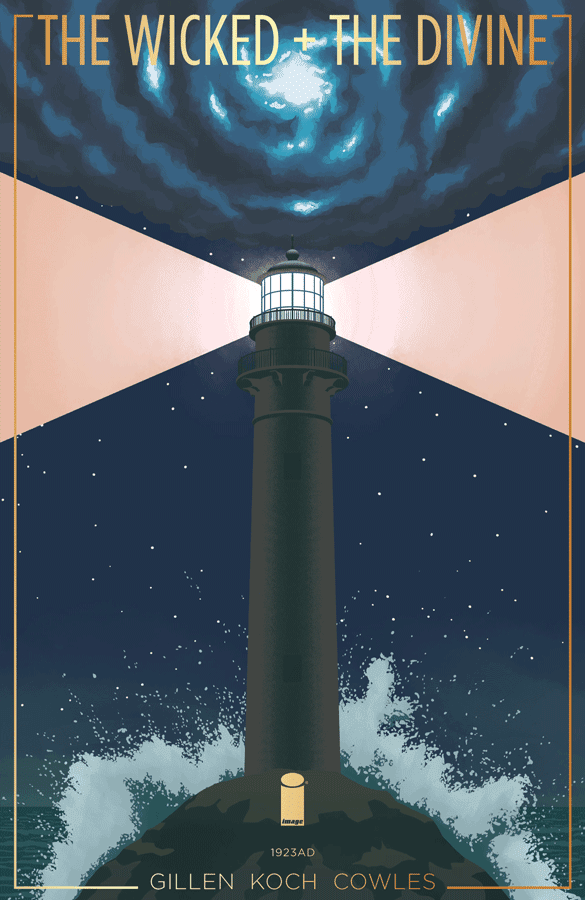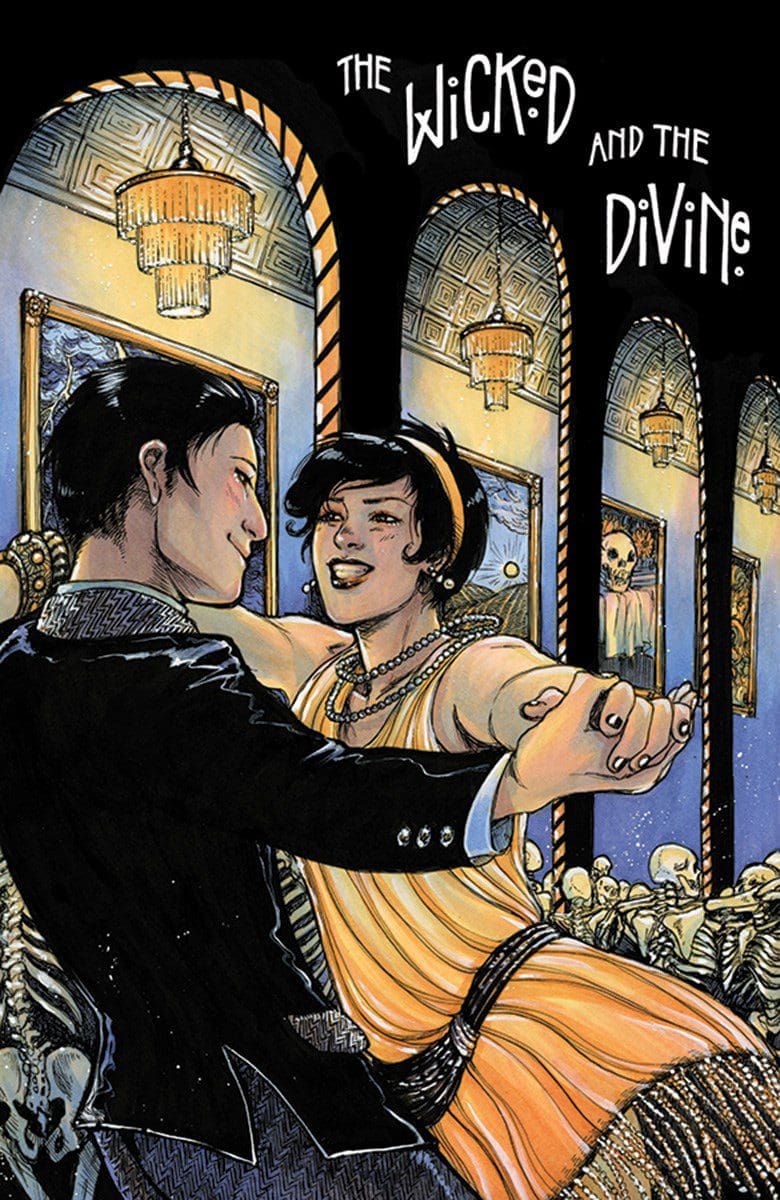When The Wicked and the Divine began, the first few pages weren’t devoted to the current-day Pantheon, but the final moments of the 1920’s incarnation.
Writer Kieron Gillen has always promised to show readers more of what happened that recurrence and he finally delivers in the latest, super-sized special issue. Set in 1923, it shows the events immediately preceding that Pantheon’s explosive end. The result is both beautiful and terrible to behold.
First off, a little under half of the issue is told in pure prose. While it’s a choice that probably won’t work for everyone, it’s also necessary.
Rather than tell us which real-life artists each god represents, Gillen forces us to figure it out, writing in each artist’s style or quoting them directly whenever they speak. Some of them are obvious. The Morrigan is James Joyce based on his bizarre speaking style and his constant references to Ireland and Gillen already revealed publicly that Orson Wells, Aldous Huxley and George Orwell make up the Norns. Baal, with his outright racism and use of the word “eldritch” seems to represent H.P. Lovecraft, but his super-sized ego feels like it refers to someone else. Woden has to be an amalgamation of influential German filmmakers since he looks like Max Schreck in Nosfteratu, but his actual creations suggest directors F.W. Murnau, Paul Leni or even Fritz Lang. Half the fun of the issue is in guessing, but it can also be frustrating and often makes it difficult to pay full attention to the plot.
Regardless of who exactly they represent, all of the 1923 Pantheon gods are still alive with only a few months left to go in their prescribed two-year recurrence when Lucifer summons them to his self-built island mansion. Unfortunately for the Morning Star, he quickly gets murdered by one of his guests, like Mr. Body in Clue.
The remaining gods are left to figure out who among them is the murderer. For those who’ve been following the series regularly, the culprit seems pretty obvious, but Gillen has some tricks up his sleeve and without spoiling anything, the murder plot and the reasons for it are pretty bonkers.
In some ways, Gillen has been working in murder mystery mode from the beginning, but it’s somewhat strange to see him go full Agatha Christie here. As one character says when the big murder plot is finally revealed, “we’re working in a traditional form, turned modern.” Something similar could be said for artist Aud Koch’s work throughout.
While the figures appear to be drawn and inked in traditional comic’s style, the backgrounds and much of the coloring appear to be ink washes. The result is a look like the sepia-toned silent films some of the gods themselves would have been making at the time. Gillen even cleverly includes title cards at the end of some pages, emphasizing the action in the same way those films do. The only difference here–and it’s a big one–are the bright, solid splashes of red, which appear most often when a god meets their inevitable end. Koch is an artist skilled at creating beautiful, often quite sensual figures and this largely prose-driven murder plot can feel like a waste of her talents even though her work takes up over half of the issue. Even so, the splash pages devoted to the gods’ deaths are striking and some of the best imagery of the series to date.
Gillen always emphasizes that the flashback specials to previous Pantheons aren’t necessary to understanding the main story and without knowing how it all ends, you have to just take his word for it. However, The Wicked and the Divine‘s 1923 special provides an incredible level of context not just to the story at large, but what brought the last incarnation of the gods to the scene that opened the whole series.
And surely, what it teases right at the end is something that will impact the book’s final two arcs. Simply put, this latest issue is an undeniably tough, dense read, but even if not all of it makes sense just now, it’s hard to resist trying to unpack its mysteries. As Ananke is quoted as saying on the issue’s back cover, “This will have to be my masterpiece.” This just might be Gillen’s.
Rating: 9/10




Great review for an outstanding issue. I believe Baal might actually be based on Gabriele D’Annunzio.
Yeah, I buy that. With more research (specifically, lots of scrolling though Gillen’s Twitter) it’s probably a combination of people with one of the bigger influences being Ezra Pound. Gillen is still promising some writer notes on the issue and hopefully those will help illuminate some more of the influences for Baal and the other gods.
Thanks for reading! Glad you enjoyed the review.